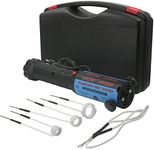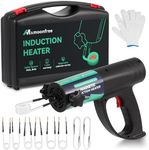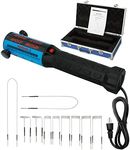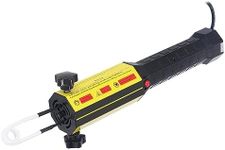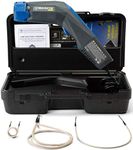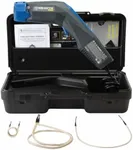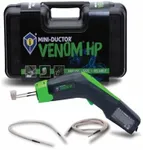Buying Guide for the Best Induction Heater For Bolts
Choosing the right induction heater for bolts is all about matching the tool to your specific needs, whether you're working in automotive repair, industrial maintenance, or home projects. Induction heaters use electromagnetic fields to heat metal objects quickly and safely, making them ideal for loosening seized or rusted bolts without damaging surrounding materials. To find the best fit, you should consider the size and type of bolts you'll be working with, the frequency of use, and the environments in which you'll operate the tool. Understanding the key specifications will help you make an informed decision and ensure you get a heater that is both effective and safe for your tasks.Power Output (Wattage)Power output, measured in watts, determines how quickly and effectively the induction heater can heat bolts. Higher wattage means faster heating and the ability to handle larger or more stubborn bolts, while lower wattage is suitable for smaller, less demanding jobs. Generally, induction heaters can be grouped into low (under 500W), medium (500W-1000W), and high (over 1000W) power ranges. If you mostly work with small bolts or occasional tasks, a lower wattage model may suffice. For frequent use or larger, rusted bolts, a higher wattage heater will save time and effort.
Coil Size and CompatibilityThe coil is the part of the induction heater that wraps around or near the bolt to transfer heat. Coil size and compatibility refer to the range of bolt sizes and shapes the heater can accommodate. Some heaters come with interchangeable coils for different bolt diameters, while others have fixed coils. Small coils are best for tight spaces and small bolts, while larger coils handle bigger bolts or nuts. Consider the typical bolt sizes you encounter and choose a heater with coils that fit those needs, ensuring flexibility for your most common tasks.
Duty CycleDuty cycle describes how long the induction heater can operate continuously before needing to cool down, usually expressed as a percentage (e.g., 50% duty cycle means it can run for 5 minutes out of every 10). A higher duty cycle is important for professional or heavy-duty use, where you need to heat multiple bolts in succession. For occasional or light use, a lower duty cycle may be sufficient. Think about how often and how long you'll use the heater in one session to determine the right duty cycle for you.
Portability and SizePortability and size refer to how easy it is to move and handle the induction heater. Compact, lightweight models are easier to use in tight spaces or for mobile work, while larger units may offer more power but can be cumbersome. If you need to carry the heater to different locations or work in confined areas, prioritize a portable design. For stationary workshop use, size may be less of a concern.
Safety FeaturesSafety features include things like automatic shut-off, overheat protection, and insulated handles. These features help prevent accidents, protect the tool, and ensure user safety. If you are new to induction heating or will be using the tool in busy environments, look for models with robust safety features. Even experienced users benefit from added safety, especially when working with high-power equipment.
